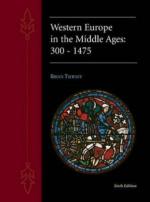|
This section contains 2,496 words (approx. 9 pages at 300 words per page) |

|
Practical Structures. Medieval secular architecture— that is, the structures in which peasants, townspeople, and nobles lived their daily lives—was practical. Function determined design. Peasants needed basic structures that were cheap to build and easy to maintain. For this reason, most peasant structures were built from local materials such as wood, grasses, mud, and, in select cases, stone. These one-room buildings could be built by local craftsmen, and they followed standard patterns; only in the thirteenth and fourteenth centuries were specialized design elements, such as stone fireplaces, incorporated. Through most of the Middle Ages many noble homes were only larger versions of peasant structures built with more durable and costly materials, such as stone and large logs, to fit the nobles' wealth and pretensions. They were designed to provide basic protection, shelter dozens of individuals, store several months' supplies, and proclaim a lord's...
|
This section contains 2,496 words (approx. 9 pages at 300 words per page) |

|




